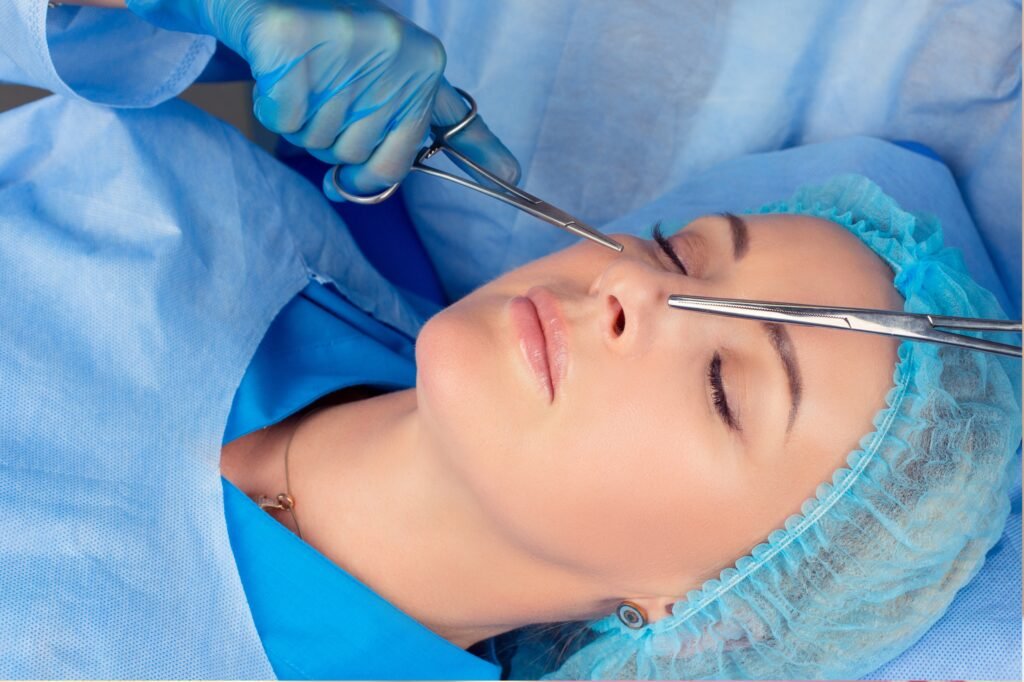
The Science Behind Rhinoplasty: Anatomy of the Nose
Rhinoplasty — also known as a nose job — is far more than a cosmetic procedure. It’s a precise surgical intervention that blends art and science to enhance the nose’s appearance or improve its function. At our ENT clinic of excellence in Dubai, rhinoplasty is performed by experienced surgeons who understand the intricate anatomy of the nose and how to achieve natural, long-lasting results.
Whether you’re considering rhinoplasty to correct breathing issues, reshape a hump or droopy tip, or revise a previous surgery, understanding the procedure is key to making an informed decision.
Anatomy of the Nose: The Foundation of Every Nose Job
A successful rhinoplasty begins with understanding nasal anatomy. The nose is made up of:
- Nasal bones (upper third of the nose)
- Cartilage (lower two-thirds that shapes the tip and nostrils)
- Septum (a cartilage wall dividing both nostrils)
- Nasal cavity and sinuses, which play a role in breathing and smell
This complex structure must be preserved and reshaped carefully to avoid compromising nasal function. That’s why working with an ENT specialist for nasal problems in Dubai is so important — they combine both form and function in every rhinoplasty procedure.
Techniques Used in Modern Rhinoplasty
Depending on your goals and nasal anatomy, your surgeon may recommend one of the following approaches:
1. Open Rhinoplasty
An external incision is made at the columella (the strip of skin between the nostrils), offering full visibility of nasal structures. This is ideal for complex cases such as revision rhinoplasty or major reshaping.
2. Closed Rhinoplasty
All incisions are made inside the nose, leaving no visible scars. This technique is used for minor adjustments and quicker recovery.
The decision is based on your nose’s structure, goals, and the expertise of your rhinoplasty surgeon in Dubai. At our clinic, we prioritize techniques that ensure both aesthetic refinement and optimal breathing.
Recovery and Aftercare: What to Expect
After rhinoplasty, patients typically experience some swelling, bruising, and mild discomfort — all part of the healing journey.
To speed up recovery and minimize complications:
- Avoid strenuous activities for at least 2–3 weeks
- Keep your head elevated while sleeping
- Use cold compresses to reduce swelling
- Follow all prescribed medications and aftercare instructions
- Attend regular follow-up visits at your ENT clinic in Dubai
Our team closely monitors your recovery and addresses any concerns promptly to ensure everything is healing as expected.
Why Choose Our ENT Clinic of Excellence in Dubai?
When it comes to rhinoplasty in Dubai, experience and precision matter. Our ENT clinic of excellence is led by board-certified ENT consultants who specialize in functional and cosmetic rhinoplasty. We take time to assess nasal function, facial harmony, and patient goals before crafting a surgical plan tailored to each individual.
Whether you’re seeking subtle refinement or need a complex revision, trust our clinic to deliver safe, natural, and satisfying results.
Book Your Rhinoplasty Consultation Today
If you’re considering a nose job in Dubai, don’t leave your results to chance. Trust the expert hands of a rhinoplasty specialist who understands both the aesthetic and medical aspects of nasal surgery.
Contact our ENT clinic in Dubai today to schedule a personalized consultation. We’re here to help you breathe better and look your best — with confidence.